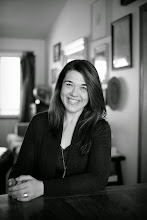Clearly on a roll, I'm back for Week 2 of my summer tutorial series. Week 1 here.
Here are some very simple ways you (a normal person with any camera) can improve your black and white conversions using Google+ Creative Kit, which happens to be free for anyone to use. Simple and free and accessible to anyone- that's what these little photography tutorials are about.
You might think, "Um...Black and White conversions. I just click "Black and White", right? What's so complicated about that?
Nothing. You're right. That is very simple. But these quick tips give them an extra nudge towards greatness and really help improve the effect of the monochrome conversion. Also, the editing you'll do to emphasize a black and white image differs from what you'll do in color.
I convert to monochrome for several reasons. First, anything that goes on the walls of my house is converted- this allows the photographs in my home to unify in a cohesive way. Second, anytime color is just super boring; like my white skinned child with not much but a butter-colored wall or beige couch behind her. That's just blah to look at. The conversion can help bring interest. Third, when color is cra-zy or distracting. Like, when my kids are in insanely different clothes with colors and patterns or labels that don't jive together or with the surroundings. That can really pull the eye around the image and the conversion allows focus to be on the subject and tones down the random distractions. Lastly, when color is poor and the texture is grainy because it's dark and I've used a very high ISO. I actually love images like this- they have a very strong editorial feel.
Dimension and Contrast
One of the reasons Black and White is so spectacular is the play with light and dark, contrast and definition. This is what Ansel Adams did so well.
Here is an SOOC snapshot of Patience.
This image is a great candidate for black and white because of all of the great contrast and interest happening, especially in the water. Lots of organic shapes to emphasize here. Also, her crazy sweatshirt and hat combo- that goes away too.
The After:

The Google+ Recipe:
1. Converted to B&W. (Tip: Have a color that looks wonky in the conversion? Check out what the color filter does.)
2. Added a layer of Daguerreotype. (Learn about that dude!) Faded to 94% (meaning it's at 6% opacity.)
What am I doing here? I'm warming up the conversion just a bit. I still want a black and white image- but rather than a very cool gray, it's almost a greige, if you will. You want subtlety, not Sepia, which I think belongs solely in photographs taken in old timey photo booths.
3. I brought the Clarity up to 5%. This brings out the definition in the lines. I also Sharpened at 5%, which adds more depth to the lines in the water, her hair, the stones at the edge, etc. Subtle.
A big reason I chose this image was for the distractions. Hudson's foot is in the far right edge and there are branches in the way at the top left corner. If you don't see these in time to avoid them when you take the shot, and you don't have Photoshop so you can remove them, converting the image can really tone down those distractions.
Get Some Creamy Silver Lightness
Here is an SOOC of my friend's daughter Evelyn
(Full disclosure I did run this through CS3 only to remove some scratches on her face.)
This image is a great candidate for a creamy and light conversion as there is quite a bit of lightness here already and this treatment just highlights it. You could even take these steps and push your image even brighter than this one, but I chose to keep the subtle definition in her hair and other features. It's a delicate balance, especially in online editing programs with less control. But you can still do so much. Read on.
The After:

The Google+ Recipe:
1. Converted to B&W.
2. Added a layer of 1960's. This is another "browning" option- again, be subtle. Removed rounded corners and Faded (adjusted opacity) to 97%. This, again, takes the cool edge off that conversion and warms it up a bit.
3. Adjusted Exposure +27 (pretty significant change- much more than appropriate for the color image) and raised Highlights +2. Watch your highlights and don't clip them! (Don't let them get overblown in your lightening fury.) Google+ won't tell you you've gone and blown them out so you need to keep an eye on them. See mine? The blanket behind her head is quite a bit brighter than the other areas of the image- in this processing program I can't pick and choose where I lighten, so I need to work within that boundary.
You probably won't want to add extra contrast or clarity here, as what you're really trying to achieve is a low-contrast monochrome image.
Last Thoughts
Remember that each image is unique. These "recipes" are just inspiration- you will tailor your own editing to suit each image you convert. So the basics: warm it up just a bit, adjust the exposure, highlights and shadows to play with the light (without clipping your highlights!), and finally, adjust contrast, sharpness and clarity to bring out even more definition. Subtle is usually best. Try it out- an ordinary blah black and white conversion is usually just a few clicks away from something much more special.






No comments:
Post a Comment